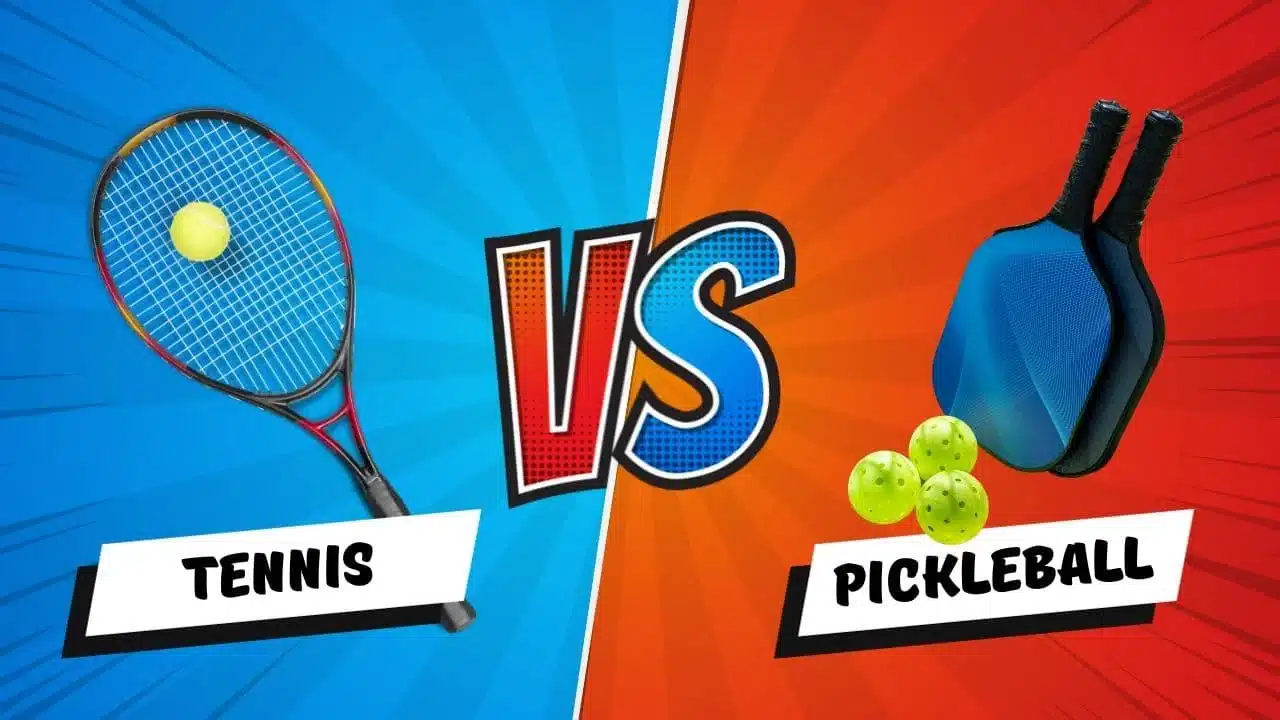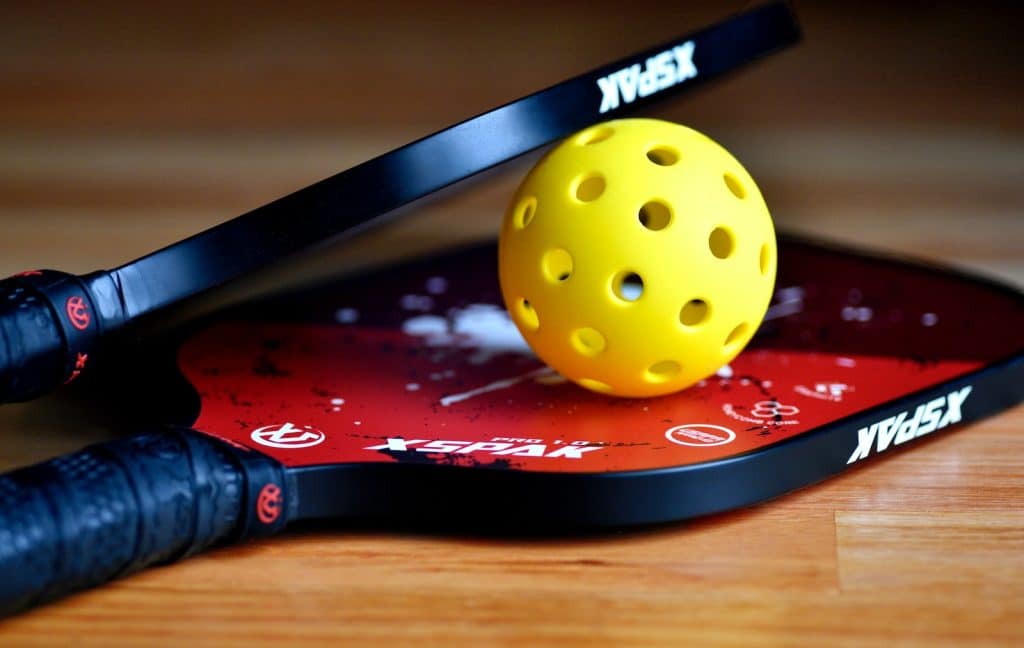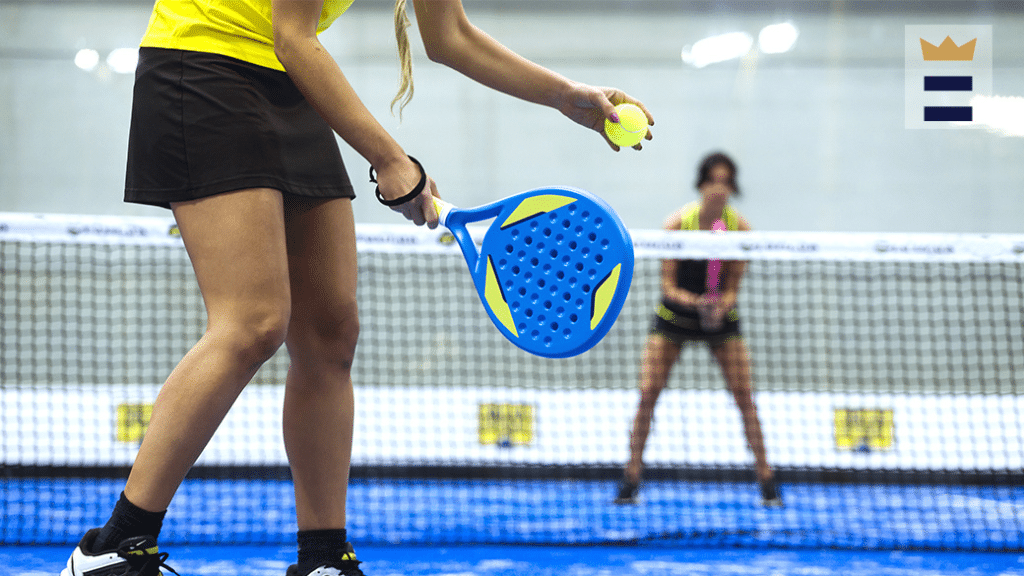Pickleball’s popularity has exploded, becoming the fastest growing sport in the country. At first glance, pickleball appears quite similar to tennis. Many tennis players are now switching over to pickleball due to intriguing differences as well as similarities between the two racket sports. However, pickleball has key distinctions that set it apart from tennis.
The most considerable differences between pickleball and tennis are court size, rules, and equipment used. Tennis courts are much longer and wider than pickleball courts. Tennis players use heavy racquets and hit fuzzy, rubber tennis balls. Pickleball courts are a lot smaller overall. So pickleball players use light paddles and hit plastic balls that don’t bounce as high.
As pickleball becomes more popular, especially among tennis players, let’s look at the major differences between these two racket sports. This guide will point out the most important things that make them different, like the size of the courts and how they keep score. Understanding what makes pickleball special will show us why more and more people are getting interested in it, even more than tennis.
Table of Contents
Court and Equipment
The court dimensions and gear for each sport are important to understand when comparing pickleball and tennis. Let’s break it down:

Pickleball courts are smaller, similar to a badminton court size. They are only 20 feet wide and 44 feet long. This compact size makes pickleball ideal for beginners and seniors. The net is lower too, about 3 feet high at the center and slightly lower at the edges. Players use paddles instead of racquets – these are smaller and lighter than tennis gear. The ball is plastic with holes, like a wiffle ball. It’s light and doesn’t bounce as much as a tennis ball.
In contrast, tennis courts are bigger, similar to the size of a small field. They are 27 feet wide and 78 feet long, so there’s more ground to cover. Tennis nets are higher, with a 3 foot height at the center strap. Players use larger racquets with strings designed for hitting balls over longer distances. The balls have fuzzy felt and bounce faster to travel farther.
Balls and Racquets
Pickleballs have a lightweight plastic shell construction, often with a wiffle-style hole pattern. This results in a low bounce compared to fuzzy, bouncy tennis balls.
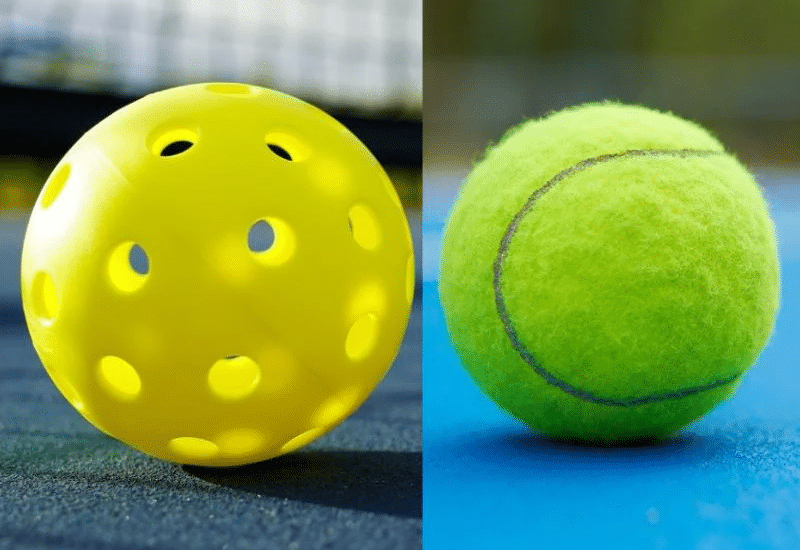
Pickleball paddles have a honeycomb polymer core covered by a smooth face material like graphite or fiberglass. This lightweight but solid design allows for control shots with less power.

Gameplay and Rules
In pickleball, you serve holding the ball and paddle together behind the back line. You hit the ball underhand – it must clear the net and land inside the diagonal service box. You continue serving until you miss. Volleying isn’t allowed while standing inside the “no-volley zone” near the net, which prevents smashing. Points are earned one at a time, and games go up to 11 or 15.
Tennis serving starts behind the baseline. You can serve overhand or underhand, aiming for the service box diagonally across. You can hit the ball from anywhere during a rally with no volley restrictions. Tennis uses a unique 15-30-40 point scoring system, with complex rules for games, sets and matches.
Both games involve paddle/racquet skills, but pickleball has defined serving zones and rules to maintain fairness.
Shot Techniques
Pickleball emphasizes finesse shots like dinking, which involves delicate shots that drop just over the net. The solid paddle and light ball don’t allow for much power or spin. Tennis uses more forceful groundstrokes, volleys, overheads and serves. The strings grab and spin the fuzzy ball more.
Serving and Volleying

Serves have an underhand motion, with the focus on placement over power. Volleying is prohibited inside the 7-foot no volley “kitchen” zone, preventing smash attacks at the net. Points start with serve returns, then move to volley exchanges near the net line. The fast pace and close proximity bring quick reactions and reversals.
Physical Demands
The smaller pickleball court means less running around than tennis. This can be great for beginners who want a lower intensity workout. The lighter pickleball gear also reduces joint impact, which may be easier on the body. However, competitive pickleball still provides exercise.
In tennis, more ground to cover means more running for cardio. Harder hits put greater impact on joints, so fitness is key. Proper conditioning reduces injury risk with tennis’ higher physical demands.
Accessibility and Age

Pickleball’s smaller court and slower speed make it easier to learn, especially for beginners. This makes pickleball extremely popular with seniors looking for activity with less strain on the body. However, good mobility helps with quick reactions.
Tennis can be more challenging for beginners with its larger court and faster pace. Adaptive tennis makes the sport accessible for people with disabilities. Tennis requires more mobility for quick starts and stops.
Pickleball is known for its friendly, inclusive community. Players of all skill levels readily find partners. The social atmosphere leads to gatherings and events off the court.
Tennis communities vary – some clubs are social while others focus on competition. Local tournaments provide connection chances. Tennis also offers events for mingling and camaraderie.
Popularity and Growth
As pickleball continues to grow in popularity, it’s not without its challenges, particularly in relation to tennis. A recent article in The Guardian highlights the increasing tensions between these two sports communities.
The rise of pickleball has led to a notable conflict with tennis players, particularly over court space. In various locations, the creation of pickleball courts has come at the expense of tennis courts, leading to friction between the two communities. Incidents of vandalism and public disputes have been reported, reflecting the growing tension. This situation underscores the need for careful planning and consideration as pickleball expands, ensuring that both sports can coexist harmoniously.
Pickleball’s rapid growth is seen at public parks and recreation centers, especially in North America. Part of the appeal is the easy learning curve for all ages. While less established professionally than tennis, pickleball’s amateur participation now exceeds many other sports.
Tennis holds an eminent position worldwide for decades, with revered championships and global superstars. For aspiring youth, tennis offers a pathway to compete at the highest levels. But pickleball’s accessibility is capturing interest from recreational players of all backgrounds.
Why Tennis Players Switch to Pickleball
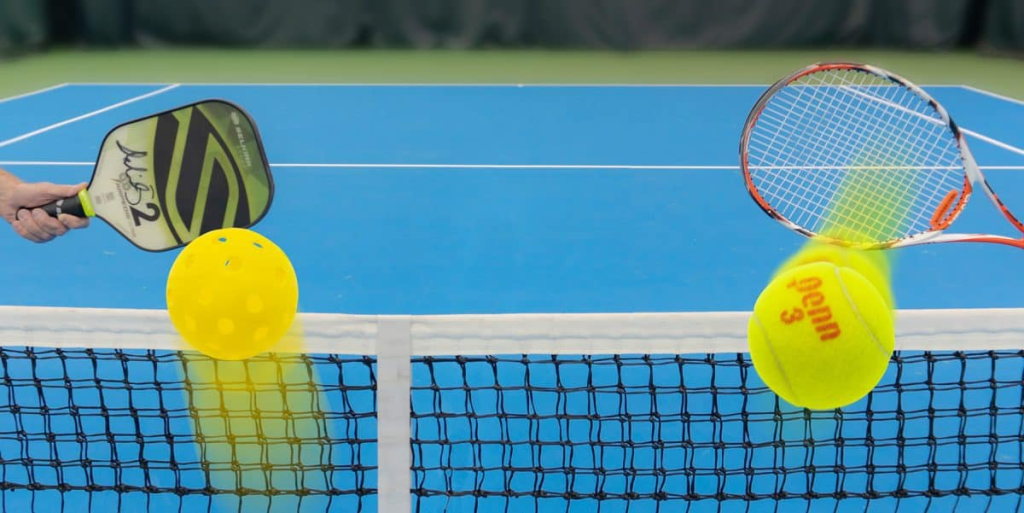
Pickleball is becoming super popular. Big newspapers like the New York Times wrote about pickleball. People wonder how a little paddle and plastic ball got so big.
Pickleball is fun for everyone. Beginners can start playing quickly. You don’t need to be an athlete. Pickleball is easy to learn, but can also be played at a pro level.
Lots of tennis players are switching to pickleball. Here’s why:
- Pickleball is lower impact. Less running and gentler on your body.
- Pickleball is social. The small court keeps people close so you can chat.
- You can play pickleball longer in life. It’s good exercise but not too hard on your body.
The small court and low net make pickleball chill and affordable. You can just play for fun with friends.
